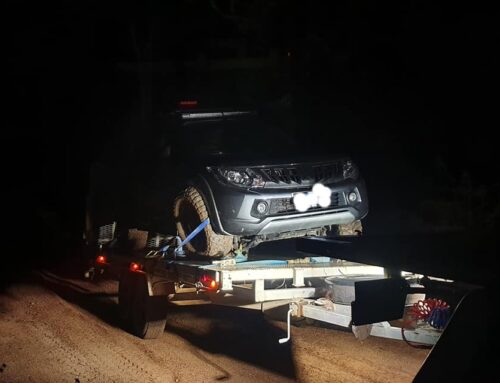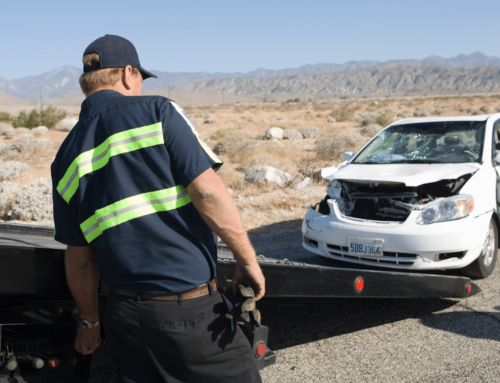Australia is certainly a country of diverse landscapes, and a wide range of challenging environments. Add in some weather that can quickly change, and your 4 x 4 day out may just turn into needing a recovery from an experienced team.
Before we take a ride on how to handle some of the most common off-road recovery situations, it is essential that you have an idea of the types of terrain you might experience when out four-wheel driving. Knowing these common terrains will give you the knowledge of what to look out for that may cause you to need a recovery.
Outback and Desert Areas – these areas are known for their vast arid land as well as the sandy and rocky terrain which can prove challenging, particularly for those who are only new to off road driving. In these areas, getting stuck in sand or being unable to navigate outcrops are the likely reasons to need recovery.
Beach Driving – taking the 4 x 4 out on the coast is a great way to spend a day, but that soft sand can cause you to become bogged and in need of a 4 x 4 recovery.
Muddy Tracks – if you’ve ever been out after even a small amount of rain, you’ll know that tracks can turn to mud quickly, getting you bogged. These recoveries can be quite challenging simply due to the loss of traction when the ground is wet. In these situations, winching or towing may be necessary.
River Crossings – while often a big part of off-roading adventures, crossing rivers and streams can be challenging for the inexperienced and the experienced alike. Vehicles can stall in the middle of a crossing which may require recovery if you are unable to get your car to dry land and started again.
Forest Trails – exploring the bush can be a great day out, but unfortunately, it does come with risks like fallen trees, mud and other obstacles which may see you stuck with no way out.
Rocky Terrain – this is one of the more common terrains where recovery is needed. Rocky and rugged terrain can be difficult for even the most experienced of drivers (and certainly isn’t recommended for beginners). Recover may be required if you get stuck between rocks or high-centred.
Remote Tracks – Western Australia is a big place, and there are some 4 x 4 tracks that are less traversed than others. Unfortunately, this often means that tracks may not be maintained which increases the risk of getting stuck, and help can be more than a few hours away.
Boggy Wetlands – wetlands and swamp areas are well known for being hard to traverse due to vehicles easily sinking into muddy or waterlogged terrain.
How to Handle Off-Road Situations
The excitement of having the opportunity to take your 4 x 4 beyond the bitumen can’t be denied, but even the most seasoned explorers will tell you of situations they have encountered where a little extra finesse (or brute force) is needed. They will all have stories of needing recovery, whether it is from a muddy patch, a sandy rut or a water crossing.
Knowing how to handle those common off-road recovery situations can save you time, frustration, and the need for some expensive repairs.
Stuck in Mud
If you find yourself stuck in the mud, here are some tips for getting out.
Reduce tire pressure to increase surface area and traction. Start with 10-15 psi and adjust cautiously.
Use Traction Mats: Laying down traction mats under the tires can provide extra grip for escape.
Gently shift back and forth in low gear, momentum can sometimes help break free.
Bogged in Sand
Hit the beach and find yourself bogged in the soft sand?
Don’t Panic: Spinning your wheels will only dig you deeper. Ease off the accelerator and assess the situation.
Air Down Significantly: Go as low as 5-8 psi to maximise tire contact with the sand.
Use Momentum: Build up some gentle speed in a straight line and maintain it to avoid getting stuck again.
High-Centred on Rocks
Finding ourselves high-centred is certainly not something anyone wants, but unfortunately, it can happen in those rocky areas.
Assess the Situation: Can you carefully manoeuvre off the obstacle with minimal movement? If not, it may be time to call in the professionals.
Jack Up or Stack Out: If you have an older vehicle, you may be able to carefully jack up the vehicle and remove enough material beneath the tires to create clearance. Use planks or rocks for stability. For newer vehicles, stack up rocks near the tires, and use them as leverage.
Winch or Tow Out: If jacking isn’t feasible, a winch or tow from another vehicle might be necessary. Use proper recovery points and techniques.
Stalled on a Water Crossing
Being stalled on a water crossing can be a scary experience – particularly if the water is rising. One of the biggest things you need to be aware of is not getting water in the engine – otherwise you could be up for some expensive repairs.
Decide which bank is closer – if it is the one you’ve come from, you’re going to reverse back the way you came. If you need to get to the other side, you will need to walk the crossing to ensure it is safe to cross.
Leave your vehicle in gear and use the starter motor to slowly inch your way out of the water. Turn the key in short bursts (not enough for the engine to catch) to stop the starter burning out. Give it a short rest every minute or so.
Once back on dry land, let the vehicle drain, start it up and get going again.
It is important if you are stuck in water not to press the clutch as this may let water in between the clutch and flywheel, and you’ll start slipping.
Four Rules for Four Wheel Driving
There are four must-do’s when taking your 4×4 out which may help make your recovery easier. The first is to always travel with a friend in another 4×4 as this can be helpful if you do need to be winched out.
Secondly, know your limits. If you are a beginner, don’t try the experienced trails. Don’t attempt any tracks or trails beyond your skill level or the capability of your vehicle.
Thirdly, invest in quality recovery gear. It could be the difference between you getting out of a sticky situation and having expensive repairs to do.
And lastly – tell someone where you are going and when you expect to be back. In some situations, you may not be able to recover your vehicle from an off-road mishap. By having someone know where you are, there’s a better chance of getting the experts in to help quickly.
Heading out four-wheel driving? Pop our number in your phone – if you find yourself bogged, stranded or stuck our experienced team operates 7 days a week 24 hours a day and there is no job too big or small – we just want to see you home safely.





Leave A Comment